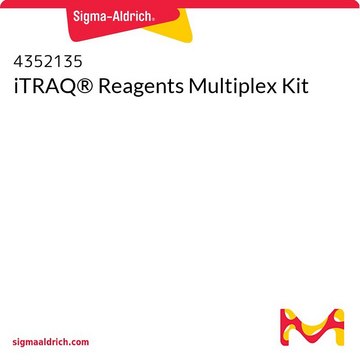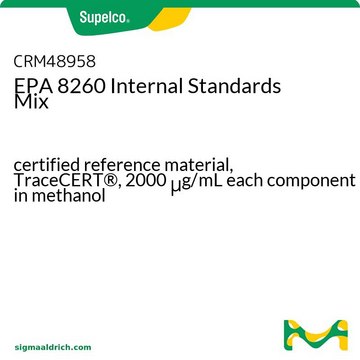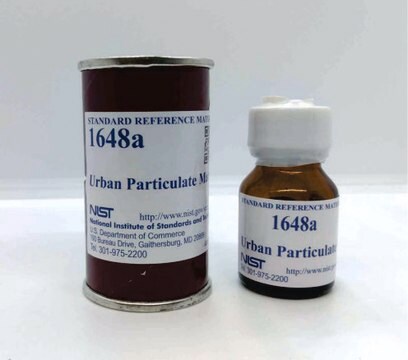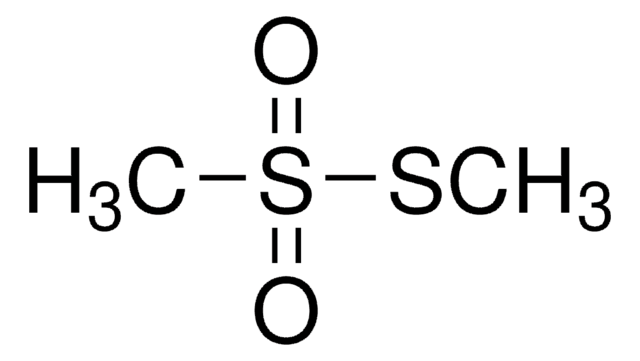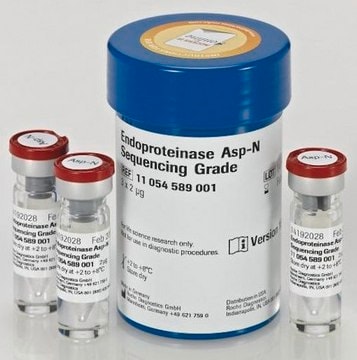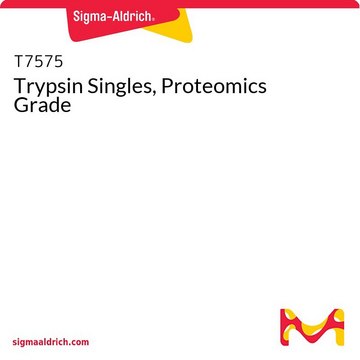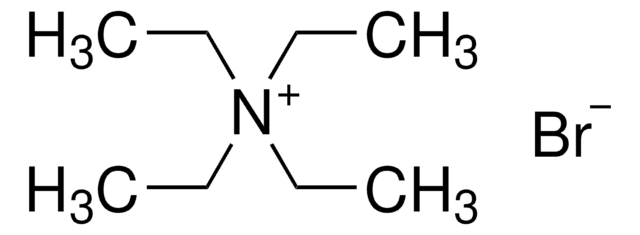4381662
iTRAQ® Reagent - 8PLEX One Assay Kit
Synonim(y):
isobaric tags for relative and absolute quantitation
About This Item
Polecane produkty
temp. przechowywania
−20°C
Szukasz podobnych produktów? Odwiedź Przewodnik dotyczący porównywania produktów
Opis ogólny
This kit contains the reagents in the equivalent SCIEX iChemistry® product number 4390811.
Zastosowanie
- of digested total protein sample in mustard sprouts
- of the total protein in broccoli sprouts
- of the desalted peptides from different plants/intact chloroplasts
Cechy i korzyści
- Simultaneously identify and quantify proteins from multiple samples
- Expands protein and proteome coverage by labeling all peptides, including those with post-translational modifications (PTMs)
- Increases confidence in identification and quantitation from MS/MS spectra by tagging multiple peptides per protein
- Increases throughput and confidence in results for protein biomarker discovery studies
- Offers a simple workflow without sample fractionation for reduced-complexity samples, such as affinity pull-downs
- Provides the flexibility to multiplex up to eight different biological samples simultaneously in a single experiment
- Fully supported by ProteinPilot Software on all SCIEX proteomics LC/MS/MS platforms
Komentarz do analizy
To view the Chemistry Quick Reference Card for the iTRAQ Reagents, please visit this Chemistry Quick Reference Card link.
Informacje prawne
Hasło ostrzegawcze
Danger
Zwroty wskazujące rodzaj zagrożenia
Zwroty wskazujące środki ostrożności
Klasyfikacja zagrożeń
Acute Tox. 4 Dermal - Acute Tox. 4 Inhalation - Acute Tox. 4 Oral - Eye Irrit. 2 - Flam. Liq. 2 - Skin Irrit. 2 - STOT SE 3
Organy docelowe
Central nervous system
Kod klasy składowania
3 - Flammable liquids
Klasa zagrożenia wodnego (WGK)
WGK 3
Temperatura zapłonu (°C)
2.0 °C - closed cup
Wybierz jedną z najnowszych wersji:
Certyfikaty analizy (CoA)
It looks like we've run into a problem, but you can still download Certificates of Analysis from our Dokumenty section.
Proszę o kontakt, jeśli potrzebna jest pomoc Obsługa Klienta
Masz już ten produkt?
Dokumenty związane z niedawno zakupionymi produktami zostały zamieszczone w Bibliotece dokumentów.
Klienci oglądali również te produkty
Nasz zespół naukowców ma doświadczenie we wszystkich obszarach badań, w tym w naukach przyrodniczych, materiałoznawstwie, syntezie chemicznej, chromatografii, analityce i wielu innych dziedzinach.
Skontaktuj się z zespołem ds. pomocy technicznej
